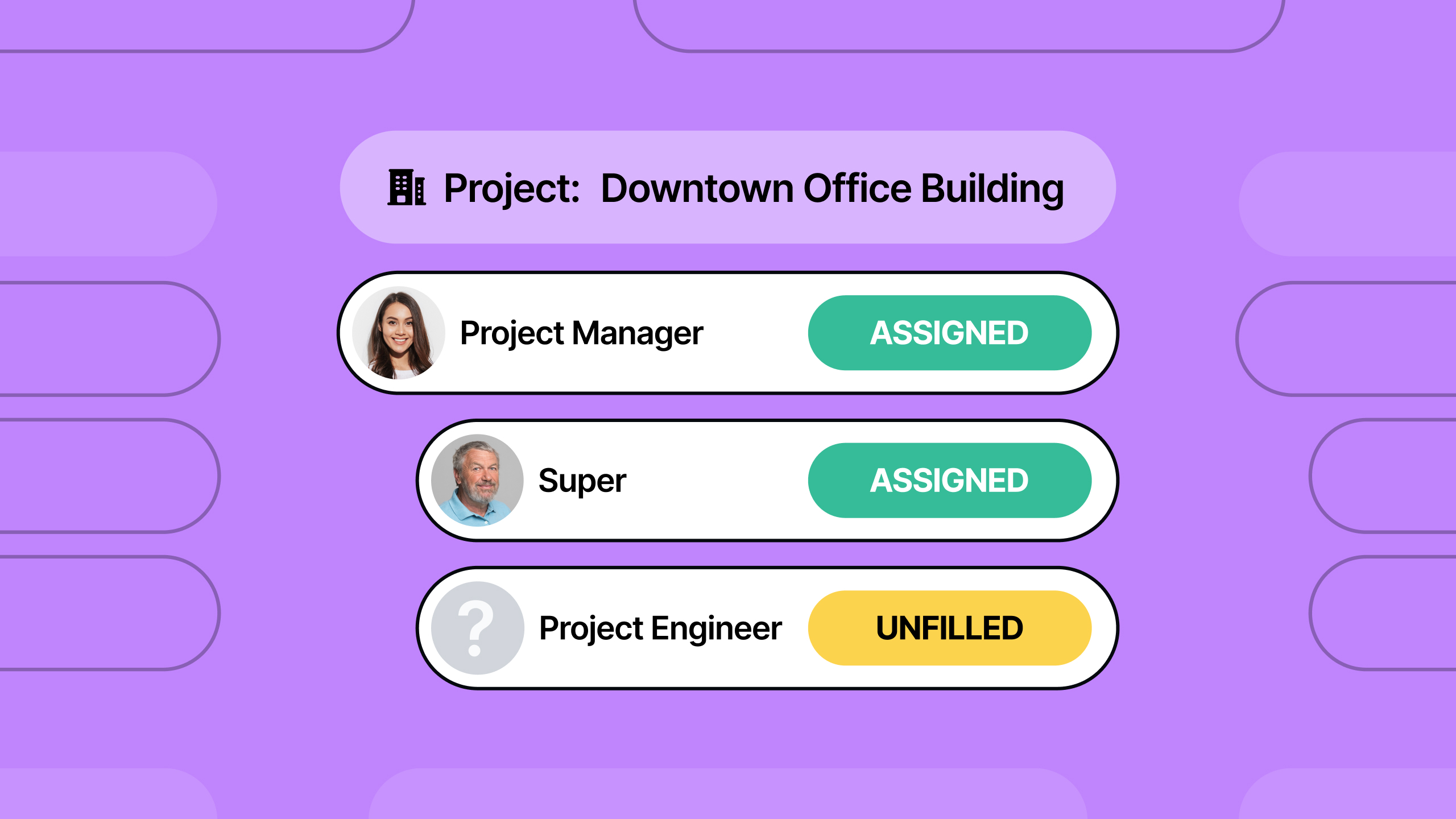
Workforce Forecasting: The Comprehensive Guide
What workforce forecasting is, how it's done properly, and why it matters in construction
February 8, 2023
8 min read
Learnables

Edward Gonzalez
Founder at Buildr

As a general contractor, locking in new projects is the lifeline of your business. But winning the bid is only half the battle.
Without proper preparation, you could find yourself making non-strategic staffing decisions that are either below or above the job’s needs. At the end of the day, delays and overstaffing equate to money spent.
With workforce forecasting, you can strategically plan your workforce in advance for potential jobs that are months and sometimes years out. By doing so, you can ensure that you have the right people, with the right skills, in the right place, at the right time.
With the much-publicized construction labor shortage raging on with no end in sight, proper workforce forecasting is more important than ever. At the end of last year, analysts predicted we’d need over half a million more workers above our current level to meet building demands. Finding people isn’t as easy as it used to be. And finding skilled people—well, we won't bring that up.
In the spirit of preparation, let's dig into workforce forecasting—what it is, how it's done properly, and why it matters to general contractors.
What is workforce forecasting?
Workforce forecasting is the workforce management strategy used by general contractors that employs predictive models—usually based on the GC's historical workforce data—to reveal ideal utilization rates and project lineups for current and prospective jobs.
"Ideal," of course, will be highly subjective based on your company and people, though every company should seek to define their own standard of "ideal." Trial and error teamed with constant cross-department communication is the empirical way to arrive at "ideal."
We've covered utilization in the past and why it's such a vital metric in construction. In a nutshell, optimizing your utilization rate directly affects the safety, execution, and overall profitability of your projects. Some GCs don't track utilization rates, in part because it's very complicated without software, and in part because they don't know how to calculate it (we covered how to do that too).
Why does workforce forecasting matter?
Workforce forecasting matters in construction for one simple reason: profitability.
At the end of the day, general contractors need to turn profit or they cease to be in business. Adeptly planning your workforce and continuously amending historical data as it rolls in to better forecast is what separates the good GCs from the not-so-good. Not only will jobs be executed to the best of the GCs ability (recall the aforementioned "right people on the right job at the right time"), the employees will, in theory, be satisfied.
Proper workforce forecasting provides data on the following:
Bidding—are you at capacity to take on a new job but to also take it on confidently with the right project crew in place? Bidding aside, are you able to take on a repeat job and preserve that relationship so that there'll be more repeat jobs?
Hiring—if you're just realizing you need to hire a superintendent on a job that's starting in 2 months, you're already too late; the best candidate was hired at a GC that forecasted the need 6-12 months ago. Proper workforce forecasting gives your HR department a cheat sheet because skilled workers are at a premium (we won't bring up the labor shortage again).
Training—sometimes downtime could mean time to develop the staff you currently have, rather than attempting to outsource a skilled worker. Do future projects imply skills that you could teach to your staff right now?
Real-time workforce strategy—construction's very complicated and the pieces are constantly changing. Sometimes any one of the "right's" (people, place, time) can shift on a dime. In the event of unforeseen issues that provoke substitutions, the savviest forecasters will be able to plug and play and keep to the overall strategy, without breaking a sweat.
Under-utilization—money is left on the table when workers have more time than they've been booked for. When they're skilled workers, it's an even bigger hole in the GC's pocket. Proper forecasting eliminates those gaps in time and makes sure utilizations are flush across the board.
Over-utilization—you're saving money in the short term but you're potentially burning out your staff which is going to be much more expensive in the long term when you need to continuously replace your people. Putting too much on your workers' plates for too long, as mentioned, can also lead to safety risks.

What does proper workforce forecasting look like?
Workforce forecasting takes time and quite a bit of effort, which is why many general contractors have started implementing software to scale the process and better optimize their operations department's time.
We've gone over what makes general contractor software worth your money and what some strategies are to ensure successful adoption. Good technology should make your life easier and far surpass the ROI. This is why tech that aids workforce forecasting is a no-brainer, it does both.
When vetting workforce management solutions, rest assured that no matter your selection, your company will benefit from a holistic boost in oneness from a newfound view of business totality that comes with accessible workforce data. Which leads to our next subject—
Workforce forecasting data accessibility & thinking about the long-term
As with any service-based industry, construction is incredibly dependent on its workforce, guiding most decisions. "The customer is always right," is a well-known cliche, and probably popularized because it's what the customer of anything would want to hear. For strong GCs looking to stay strong, they know their livelihood is all about their employees first, customers second.
With your employees at the forefront, it’s important to think long-term in more ways than one. Workforce forecasting for projects is crucial, but you also need your marketing and business development teams to push your pipeline, and your HR person to have the resources they need to reach their goals.
Traditional project-first approaches to project management still remain, but they might be misdirected. Construction is only as good as its people—and that’s the biggest threat to project success. Other departments could suffer if certain data, specifically workforce forecasting data, is kept away from the rest of the company. Business development teams, marketing folks, and HR directors will have no collective aim. Workforce forecasting requires workforce data and this data's accessibility helps within and without the operations department. Every department would benefit.
Here's a customer story about how one of our client's benefitted by having the totality of their business there for every department to see.
A view of business totality = safer jobs, no burning out, no last-minute hires
Construction and the future of workforce forecasting
Construction is a spinning-plate industry. GCs don't build one project at a time, finish, and move on to the next with the exact same project crew. They juggle multiple ongoing projects all at different stages, all with (mostly) different project crews, all while looking ahead to the next project they can take on. This is why implementing a firm workforce forecasting strategy isn't only important, but required in 2023.
The need for proper workforce forecasting will only keep getting more vital as workforce forecasting continues trending from the savvy insider strategy it is now toward the industry norm process it's poised to become within the next 2-3 years. As more industry vets continue to retire, the labor shortage will rage on. Keeping your staff at the size you need it will be life or death for all GCs.
Cloudy project visibility has long been an enemy of workforce forecasting, making it difficult to know who to staff and when—until now, thanks to workforce forecasting software.
Stay in the loop
Seriously, you should sign up to be a construction insider. Everyone will be so jealous of you.